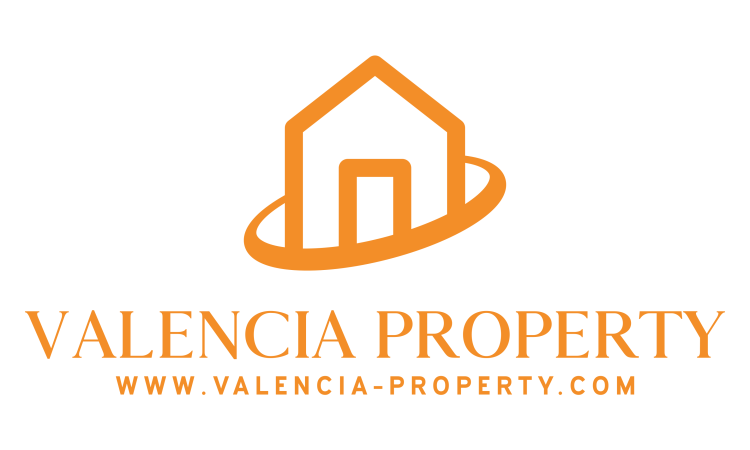
We saw an article last week (in Spanish) about how all new build apartments look the same; large, imposing, white cladding and small terraces, the same materials, the same sizes, the same... everything. There's even an Instagram account for these type of blocks @bloque_cebra because they have been baptised here as "Zebra blocks" for obvious reasons. When you see them you know why. They proliferate among the new builds shooting up all over Spain. And Valencia doesn't miss out, in fact certain areas are at the forefront of this building surge. Today we are going to look at this phenomena and investigate what it means for neighbourhoods all over Spain but especially in Valencia.
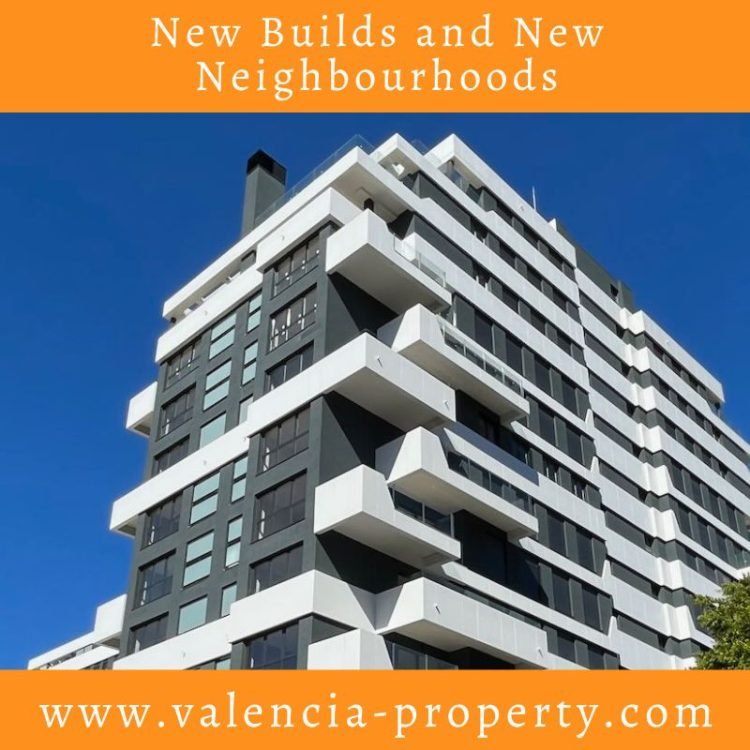
The Invasion of the 'Zebra Blocks': Welcome to Real Estate Fast Food
If you've driven through the outskirts of Valencia especially the area bordering the CV30 to the South of Malilla (or Barcelona, or Seville, or literally anywhere in Spain) lately, you've probably experienced a peculiar déjà vu. Those towering residential blocks with their distinctive black-and-white striped facades aren't a glitch in the Matrix – they're what architects have ironically dubbed zebra blocks. And they're multiplying faster than McDonald's franchises in the 1990s.
Imagine if architecture had a "copy-paste" function. Now imagine developers discovered it and got a bit... too enthusiastic. Zebra blocks are the residential buildings that have colonised approximately 70% of Spain's new housing construction. They are near identical high-rises with monochrome striped facades that look the same whether you're in Bilbao, A Coruña or even Valencia.
The Instagram account mentioned above @bloque_cebra (followed by nearly 15,000 people who clearly enjoy monochrome architectural schadenfreude) has mapped over 1,000 of these buildings across Spain. Their "safari" is equal parts documentation and a little bit of a warning.
The Anatomy of a Zebra: What You're Actually Buying
Let's talk about what makes a zebra a zebra:
The Facade Formula:
- Horizontal stripes: white and black (occasionally wood-toned, for that "warm touch")
- Anthracite-colored windows – small ones, cleverly grouped in dark bands to disguise just how tiny they really are
- Glass balconies with tinted railings
- LED strip lighting (because nothing says "quality construction" like unnecessary lights)
The Zebra Pack: Almost every zebra comes with the standard extras you find in new builds these days when space allows; private pool, gym, padel court, and garage, all of them just for the residents. Notice anything missing? Street-level shops, public interaction with anyone outside the building, or actually any reason to actually step outside your building, you'll take the car to the shopping centres right? It's vertical suburban isolation. They look great when they appear but at what cost?
Designed for Instagram, Not for Living
Here's where it gets delicious: these buildings are literally designed to look good in real estate listing photos. The renders are often more materially rich than the actual buildings, the opposite of normal architecture where construction usually adds depth to the design.
Artificial grass (even on tiny balconies), vinyl flooring pretending to be wood, ceramic trying to be marble – it's all theatre. Everything pretending to be something else. As one architect put it: "When you buy a washing machine, they're mostly white. You just compare specs. Zebra housing works the same way. It's the real estate appliance."
The Fast Food Analogy (It's Worse Than You Think)
The comparison to fast food chains isn't just clever branding, it's disturbingly accurate:
- Standardized product: Same building, any city, any climate.
- Maximum efficiency: But not energy efficiency perhaps. Efficiently built for profit per square metre, not liveability.
- Zero local flavour: The design ignores whether it's in rainy Galicia, sunny Andalusia or freezing in winter Teruel.
- Franchise model: Repeat until profitable, then repeat some more, again and again.
Why Developers Keep Serving This Same Dish
The zebra phenomenon isn't an accident – it's the inevitable result of market forces meeting minimal (or even maximal) regulation. Yes, everything is market forces these days.
- It photographs well - crucial for online listings
- It's cheap to build - industrialized construction, no custom elements compared with other builds.
- It's legally safe - meets all minimum requirements without having to innovate or find solutions
- Buyers don't know better - when everything looks similar, you compare prices and square metres, not quality
And the architects know that their plans will be approved, after all they look great on the renders. As one of the architects behind @bloque_cebra noted: "The zebra isn't designed, it's processed."
What This Means for Valencia Property Buyers
If you're looking at new construction in Valencia's outskirts, my first question would be why because, as we'll get onto below... neighbourhoods... But anyway, here's your irony-free advice. First the red flags...
- If the building could be in any Spanish city without anyone noticing
- If the render looks suspiciously better than the show flat (If there is one)
- If the "amenities" are all inside the complex with dead streets outside
- If your windows are notably smaller than the balcony they open onto
Then you might find that the place you buy lacks a bit of neighbourhood quality, and it's not going to arrive any time soon.
Better Alternatives
- Rehabilitated properties in Valencia's centre. Character, location, actual community... Or even better buy good bones and get the reenovation done how you really want it.
- Quality new builds. They exist! Look for projects that respond to local climate, culture and architectural styles
- Public housing projects. Catalunya and Baleares have award-winning social housing that proves alternatives exist, hopefully they'll get to Valencia soon too.
The Cultural Cost
Beyond individual purchasing decisions, zebra blocks represent something larger: the loss of Spain's rich architectural tradition of streets designed for living, not just passing through. Valencia's historic ability to blend indoor and outdoor life, to create vibrant street-level culture have been sacrificed for maximum profit per square metre in the zebra blocks on the outskirts.
When zebra developments fill their ground floors with garage doors or even surrounding fences instead of cafés and shops, they're not just building housing, they're building isolation, they're building the anti-community and blocking off any development of that community.
The Bottom Line
Zebra blocks aren't illegal, they aren't dangerous, or even particularly terrible by strict housing standards. They usually look more than decent. They're just... profoundly mediocre and repetitive. They're what happens when architecture becomes a purely financial calculation.
For buyers: you deserve better than real estate fast food, especially in Valencia where architectural excellence is part of the cultural DNA.
For the industry: perhaps it's time to remember that you don't just build buildings, you build the cities we'll live in for decades to come. And what will these places look like in ten, twenty, fifty years time? Remember how badly the sixties and seventies buildings have aged compared with the classical facades of the 1920s?
Looking for Valencia properties with actual character? Contact us for buildings that know what city they're in. Nolla floors, high ceilings, architectural winks to the past...
But now let's go back to what we were going to talk about before I went off on a tangent about Zebras... How long does it take to develop a neighbourhood and where should you be looking in the new Valencian neighbourhoods?
How Long Does It Take to Develop a Neighbourhood?
The answer is 20 years! Because it requires some, many or all of the following to happen.
- People need to move in and live there and they won't do it in places that don't have the following.
- Shops. If you have to get in the car to go and get your shopping then don't expect people to be rushing to move in. A central shopping centre of mall is ok but better are plenty of small shops selling the basics. Places where people can build a relationship with the people running the shops. And of course if people aren't living there then no shops open. Catch 22 of course.
- Bars/Cafes. If I have to use my coffee machine rather than popping into my daily local bar then what's the point. But again if there's nobody living there then who'll open a cafe or bar?
- Restaurants. If i don't fancy cooking then I want a few choices for local restaurants. This isn't as important these days due to ordering in but then again... ordering in is one of the problems meaning places look like ghost towns in the evening in many countries.
- Amenities. Council run amenities or private amenities but amenities all the same. Gyms, offices, advice centres, social clubs, a Fallas association, day centres for the elderly, even places like the lottery shop.
- Green Spaces. There are over 9 million dogs in Spain. They need trees to urinate on. There are just under 8 million kids (Under 18s). Yes, people prefer dogs, probably because they are less demanding. Kids need the same spaces as dogs but less for urination purposes.
- Kids' Parks. And speaking of kids they want and need parks and the parents want them to have parks too as then they have a place to meet up with other parents and chat. Parks take time to grow naturally but at least the playgrounds can be built relatively quickly.
- Safety. The more people around the safer people feel. When places are empty and dark they feel more threatening (Even when they are not) If there aren't people living in the neighbourhood and they haven't got choices to go out to then people in Spain feel less safe even though Spain is one of the safest places on the planet.
- Public Transport Options. Especially if the new neighbourhood is on the outskirts of the city then the council needs to put in place public transport options; buses, metro, even bikes etc... to get in and out of the neighbourhood.
- Neighbours. As mentioned above the Spanish are a social lot and living in a building with few neighbours isn't ideal. The chat while waiting for the lift, seeing familiar faces at the local cafe or walking the dog and exchanging a few words are essential for people to feel it's their neighbourhood.
- A "Warm" Feeling. When people go out they want to feel their neighbourhood embrace them, they want to recognise not only people but pets, shops, the local quirks and more. That feeling of belonging is essential and that's why the Spanish in general love staying in the areas they have always lived even when they leave home and they always think their "Barrio" is the best, wherever it is.
So the question is where in Valencia are the neighbourhoods that were built in the period before the financial crisis that are now beginning to have that neighbourhood feel? (Or not in some cases) Let's look at the new neighbourhoods of Valencia.
The City of Arts and Sciences/Penya Roja
Want views, facilities and established communities? Then the City of Arts and Sciences (CAC) area may be the place for you as long as you have a decent budget. The truth is that the CAC area shows a few aspects of the Zebra buildings well before their time but people have been living there for ages now and everything has grown up around them. There are new builds on both sides of the riverbed overlooking the City of Arts and Sciences but nobody wanted to live there until the Aqua shopping centre opened on one side and the Saler shopping centre opened on the other (they are connected by the bridge that divides the CAC) and once they opened then people started to move in and then other shops started opening around them, especially the Aqua shopping centre. In turn, this attracted more people to live there and a neighbourhood was born.
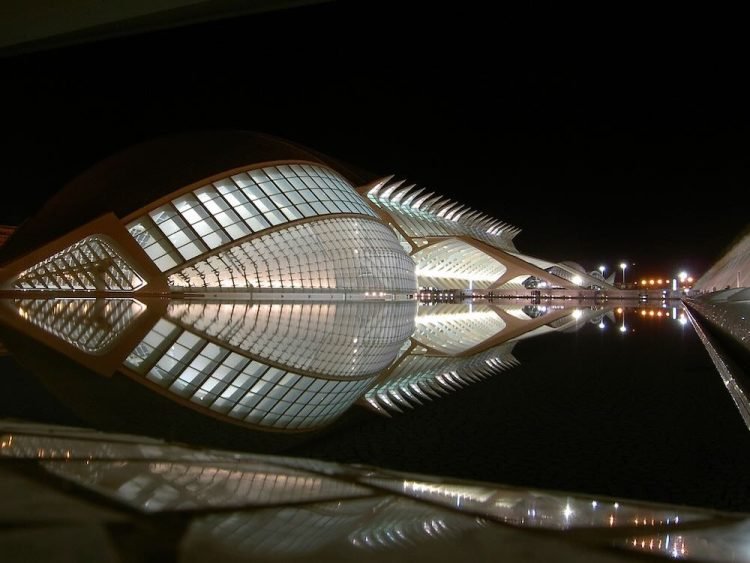
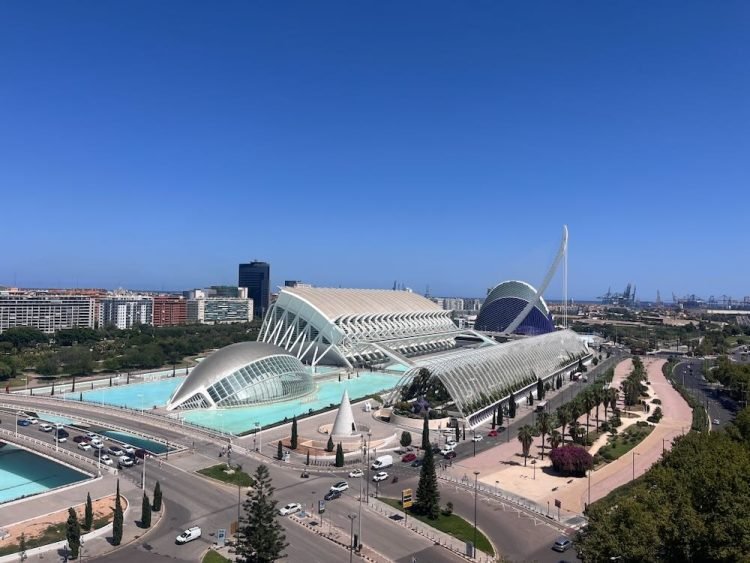
Nou Campanar/Sant Pau
The area to the North West of the city was developed with two great amenities, the Bioparc and the Parque de Cabecera. Families moved into the area and children have grown up there now and started to look for their own places there. It also has a couple of big hospitals which attract a huge number of staff and in turn their families too.
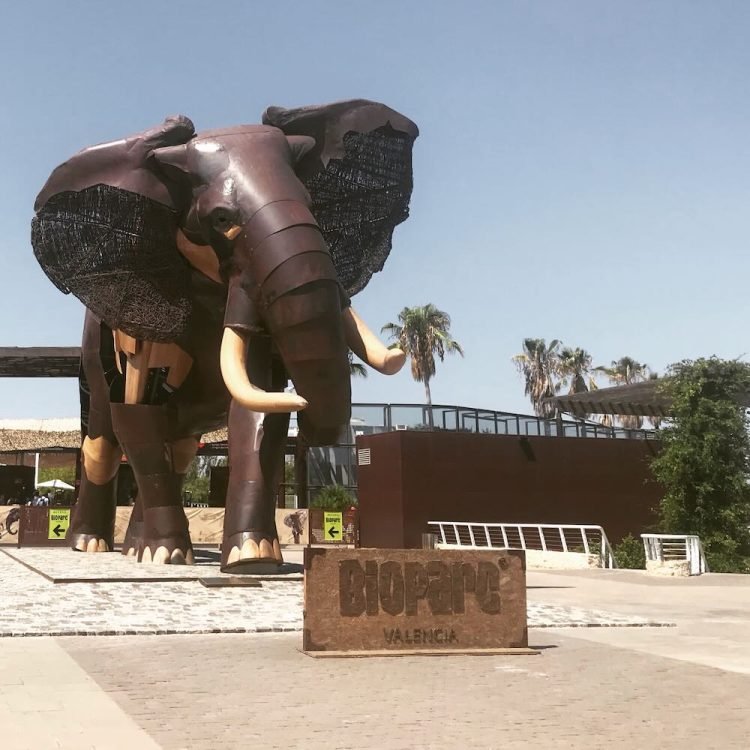
Nou Benicalap
Near to Nou Campanar, we have the other Nou, Benicalap. This is the area that I go through every day on my way into Valencia. I have therefore seen it develop over the last twenty plus years and it is now a vibrant area full of cafes, restaurants and people. It will continue to develop with the building of the New Mestalla stadium which is finally happening after more than 15 years of being abandoned.
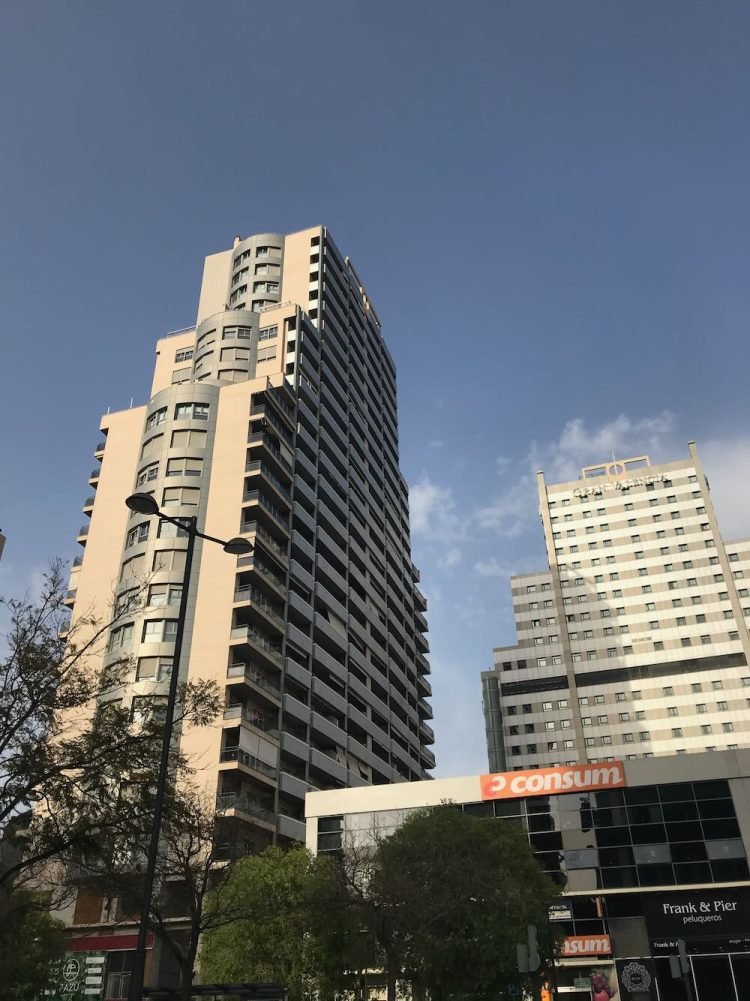
Malilla
Zebra warning. Not the bottom end of Malilla near the the Nuevo Fé Hospital. That is zebra central. The top end that leads on from Ruzafa was developed around 20-25 years ago and the shops and cafes moved in quickly as did the people. Just to the west of Ausias Marx avenue is this area and it's vibrant now but will be even more so if they ever get round to parts two and three of the Central Park project.
Las Moreras/Nazaret
Yet another Zebra warning. This area has been developed in the last few years and will continue to be so for many more. Out on a limb on the far side of the Oceanographic and separated from it by the railway line with the Port on the other side, Las Moreras is one of those places that I think will only develop well if quite a few projects happen including putting the railway underground. Will that happen? Not sure. At least they have the metro going down there now but Nazaret itself benefitted more from that. Maybe the new Levante Football Club training centre will bring it more joy. Maybe give it 20 more years.
Patacona (Alboraya)
Not strictly Valencia, the Patacona is the area by the beach to the North of the Malvarrosa. Populated by medium rise places all built in the mid 2000s, the Patacona always had a sterile feeling but with the new planned development coming up, the excellent sports centre, the great selection of restaurants by the Promenade and the increase in the number of water sports options and other beach activities, the Patacona buildings have more and more permenant residents. The bus service to Valencia and Alboraya is decent and you feel like it's a seaside area unlike the rest of Valencia.

New Development in the Suburbs
We have talked about the suburbs before in these pages and you can find out more by using the search button in the menu. However, most of the suburbs have strict limits on height of buildings so it's unusual to see Zebra Blocks in them. The suburbs' development tends to be characterised by row houses or terraces with shared facilities, in fact the CV35 is known locally as "La Ruta del Adosado" harking back to the legendary "Ruta del Bacalao" from the 70s to the 80s and 90s which were a bunch of clubs and discos playing EDM while the crowds were under the influence of various drugs.
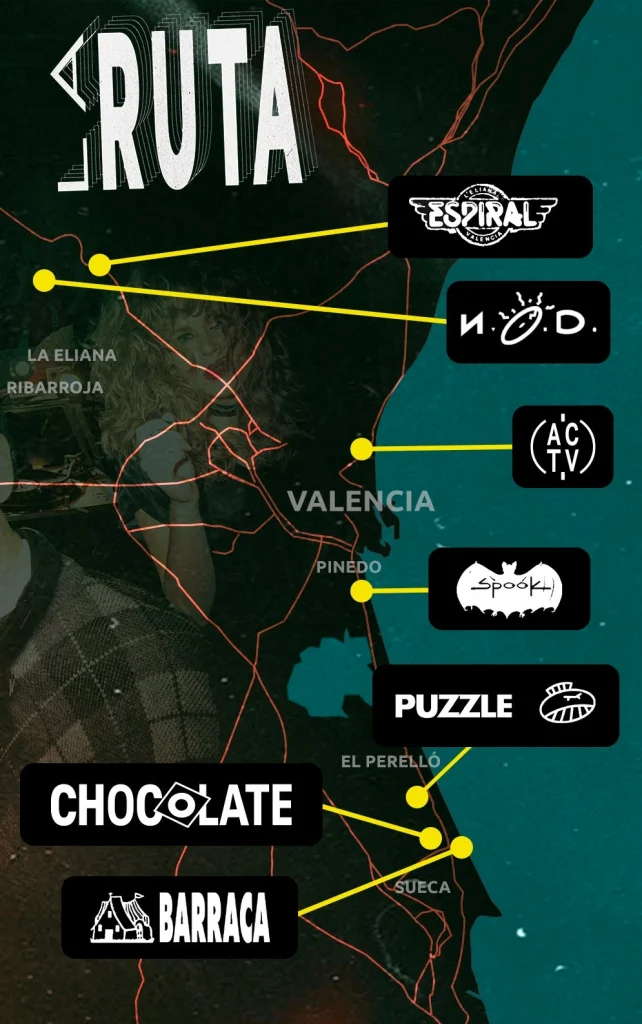
The Adosados (Row houses and semi detached pareados) generally lack any architectural merit but I have to say, I live in one and love it with the shared gardens and pool allowing me outside space without having to look after it myself. Suburbia has a lot of these cut and paste developments so in that way they do resemble the Zebra blocks because there are a lot of the same type of places.
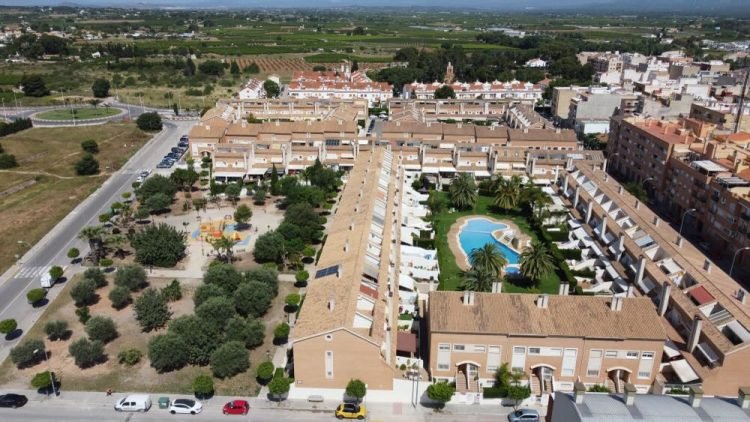
The above example in Betera is a high end terraced development on the edge of town. Gathered around a central pool and garden the houses are large and set over various floors allowing for lots of space. In this case you can see also the local small park with the kids' playgorund on the left, which is public as opposed to being just for residents. You can also appreciate that each house also has its own small terrace and garden which is why this is one of the top end developments.
Cubic Development
The other major development in the suburbs are for those with deeper pockets but again they are a bit cookie cutter compared with traditional buildings and they are the cube houses, below you have a larger example (Or how the render looks). It's as if the Minecraft generation have moved en-masse into architecture after leaving pre-school.

Always white, always with a reflective pool, always with large windows, always with artificial grass (because we wouldn't want anything natural disturbing the peace or making a mess would we), always totally overpriced compared with traditional building styles. Cubic houses always look great in the property listings but beware of various factors that mean you can usually find better options;
- Small Plots - They are usually on smaller plots as the developer tries to make as many as possible to maximise profitability and all of the better, larger, more central plots have been used already.
- Copy and Paste - There may be many units in a row and they are all the same.
- Secondary Locations - They use plots that are available, not central, not with the best views, not prime.
- Deceptive - They look bigger than they are. They are anti Tardises (For the Doctor Who fans out there) They look huge but with a smaller floor space than may initially appear.
- Square metre price - They are invariably a much higher price per square metre than comparable traditional style properties.
Conclusions
As you may have noticed we are not great fans of the move towards flat pack, fast food architecture and development. However we may be fighting a losing battle in a World where almost everything is measured in profitability and corporativism.
Our fear is that natural neighbourhood building will never come out of these developments, especially in the cities. Therefore it seems logical that our advice continues to be the same. You come to Spain for what Spain is, a social, living breathing mass of humanity sharing public spaces and access and mingling with everyone to give a harmonious whole. That's true even in the smaller villages, in fact it might be even more true there. Buy in the areas where the neighbourhood solidity is already established rather than waiting around and hoping that eventually the greasy spoon cafes, non-chain shops and restaurants and more move in. Buy your place where there is life and get yourself down to street level to enjoy that lifestyle and the social fabric of the place you choose to call home. Use the shops, use the cafes, use the amenities because if you don't then they'll disappear. After all there's a reason to come and live in Spain right? You come here for what Spain is right now.
Let Us Know What You Are Looking For
Just fill in the form below and we'll get back to you to help you get there.
Take Your First Step to Buying Property in Valencia
Fill out this consultation form to help us understand exactly what you're looking for. Our team will review your requirements and arrange a call to discuss your Valencia property journey.
Property of the Week in Campanar 590K

The inspiration for this post was this description with the idea that it takes 20 years for a neighbourhood to develop. Take a look at how we described it here.
"This isn’t a part of the city we have been coming to very often, a lot of the construction was done here about 20 years ago, which is pretty recent by Valencian standards, as not a whole lot has been built since the financial crisis. It takes about 20 years for a new neighbourhood to develop and mature, and now this area does a have a lot of restaurants, bars, shops and other services and it’s an area we will find ourselves considering more and more often in the future. As an added bonus this apartment is close to the new Valencia CF stadium which will definitely (probably – maybe) be finished in a couple of years, further improving the area.
This property has light, space and quality finishes. It features three bedrooms with built-in wardrobes, plus an extra closet in the hall for extra storage space. The master bedroom has a spacious en-suite bathroom with a bathtub, while the second bathroom, with a shower, serves the rest of the home.
The very large living-dining room gets a lot of natural light through its double-glazed windows, and offers a warm and welcoming atmosphere throughout the day. From here there is direct access to the terrace, a perfect space with plenty of room for relaxing, gatherings with friends, or dining al fresco. The separate kitchen could easily be opened to the living area, to make the living space even bigger.
The building also offers a swimming pool, a gym equipped with a sauna in the men's and women's locker rooms, an event room, and a squash court. Security is guaranteed with a concierge service, providing peace of mind for residents. There is a parking space in the basement included with the apartment. Modern living with light, space and comfort. Get in touch now."
Stepping Stone Rental of the Week

Live the Valencia vibe with our 2 bedroom Russafa property that is now ready for an October entry!
Lovely 2 bedroom apartment (Master BR and second room with sofa-bed) overlooking the high demand district of Russafa. Great external views from every room. 4 balconies, wooden beam ceilings, hardwood floors, lift, in the heart of a lively neighbourhood with endless options for cafes, restaurants and shops. Just a short walk to Park Central, North Station (train station) and Plaza Ayuntamiento. It's very close to various forms of transportation all while being in a safe and vibing neighbourhood.
Read More...
If you liked this, and who wouldn't, then feel free to click through to more of our top notch articles, podcasts and more. Just click on the images below to find out more.
One Of Our Recent Posts
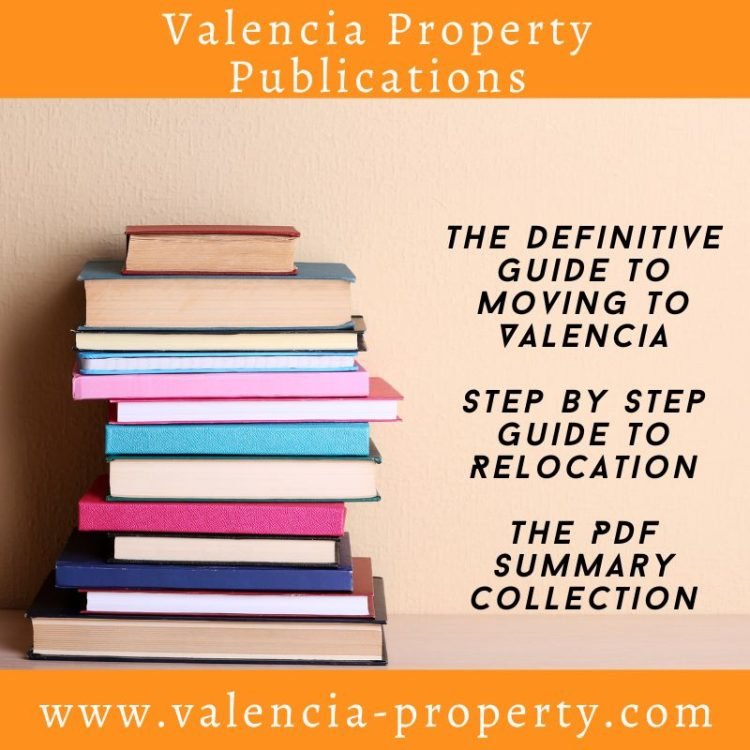
Sweet Style in Sueca 205K

Click on the image to see more of this great value apartment in Sueca. It's the top two floors of a house.
From Our Bluesky Posts
How To Write A Property Description The alternative bible for writing a property description to keep people entertained and coming back buff.ly/KuSLyiz
— Graham Hunt (@grahunt.bsky.social) October 4, 2025 at 10:01 AM
[image or embed]
#Llanes looking fantastic tonight
— Graham Hunt (@grahunt.bsky.social) October 3, 2025 at 8:12 PM
[image or embed]
Last Week's Post

Podcast Highlight
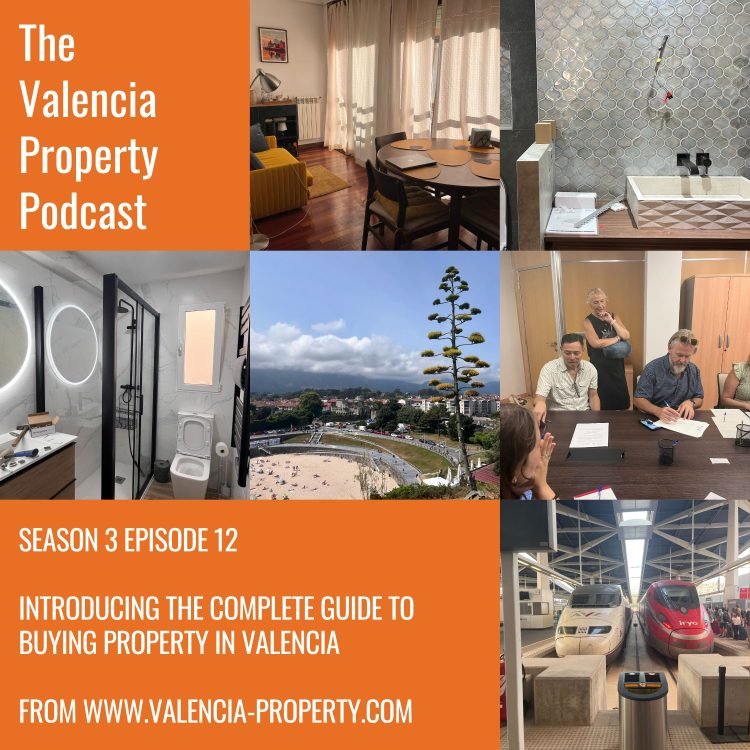
Go To Our Homepage to Explore More
